No matter if you own a small insurance firm or a large corporation, your website is a primary customer-facing resource. Websites typically form the backbone of online marketing for insurance agents, and they allow business owners to share details about their companies, their products, and their services. Naturally, business owners want their websites to create positive visitor experiences, and organization of the content on the site is key to that user experience. In this guide, we’ll present the basics of website organization, helping you to give your site visitors the information they need and the positive experience they desire.
Establishing the Foundation: Keys to an Organized Website
For those first embarking on a new website project, site organization begins long before the code is written and content and images are added. To establish a solid organizational foundation, a great practice is to identify three main areas, which will help determine the website’s organization structure and user interface. These three areas are:
- The company identity – its brand, its vision, what it stands for, and the stories you want to tell your site visitors. With these details, the site can be fleshed out, giving visitors a clear picture as to what the company is all about.
- The audience – who is the intended audience of the site? There may be several groups, including information seekers, potential customers, and related industry professionals, among many other target audiences. Arranging elements on the site to achieve a positive user experience should be the end result of this audience identification step.
- The call to action – when visitors arrive at the website, what is the intended goal? By understanding what you want your visitors to do – sign up for a newsletter, gain valuable information, or make a purchase, to name but a few examples – you’ll have a clearer understanding of the content and organizational needs of the site itself.
For digital marketing professionals tasked with revamping an existing website, focusing on these three primary areas can help guide the project. Achieving a clear organizational structure on an existing site may be more difficult than developing the same organization from scratch, but these fundamental aspects of the site and its user experience are critical.
Sitemaps and Navigation Structure
In order to both improve the user experience when visiting a website as well as to organize content in a logical manner, site navigation structures bear strong consideration. Most digital marketing professionals agree that a simple navigation structure is the preferred strategy, particularly in modern web design. How does the web development team achieve such a navigation structure?
The answer lies in sitemaps. A traditional sitemap, where the website’s structure is laid out, presents a great opportunity for organization. Web teams can arrange content elements and types into categories, such as product and service descriptions, specialty programs, employee profiles, and company news. Grouping similar content types under this framework can then point to overall navigation strategies for the finished site. A sitemap streamlines the content organization process, allowing visitors to readily find the information they are looking for with a minimum of effort.
For navigation purposes, think about the target audience and determine which content they are most likely seeking. Place links to the most sought-after content at the top of the homepage, using dropdown menus if there are many different types of content available on the site. It is important not to clutter the top of the homepage with links pointing to every type of content; a better approach is to place the critical components at the top of the page, then add links to lesser-utilized content at the footer.
In organizing website content using sitemaps and navigational structures, it is critical to understand that the web team must build flexibility into the website itself. User preferences evolve, and new content may be added to the site on a regular basis. In online marketing for insurance agents, one thing is certain: nothing stays the same for long. Organizing a large website can be a significant challenge, requiring careful thought of changing user habits, emerging user preferences, and evolving company goals. With a foundation of content organization and a clear, concise, and easy-to-follow navigation structure, it is possible to anticipate these aspects, delivering new information to site visitors and keeping the user experience as positive as possible.
About Neilson Marketing Services
Since 1988, Neilson Marketing has been implementing innovative marketing solutions and strategies for our clients in all areas of marketing. Contact us today at (866) 816-1849 to put our talent, expertise, and vast resources to work for you. Let’s make things happen, together.

